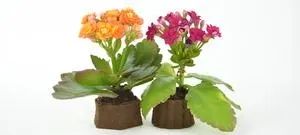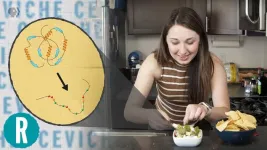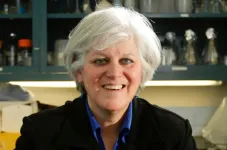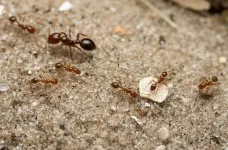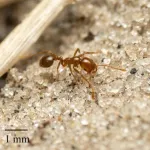(Press-News.org) Agriculture relies on synthetic nitrogen fertilizer, which is made using energy- and carbon-intensive processes and creates nitrate-containing runoff. Researchers have long sought solutions to reduce emissions from the industry that accounts for 3% of energy consumption each year.
A collaboration between two labs at Northwestern University, partnering with the University of Toronto, has found that producing the fertilizer urea using electrified synthesis could both denitrify wastewater while enabling low-carbon-intensity urea production. The process, which includes converting carbon dioxide and waste nitrogen by using a hybrid catalyst made of zinc and copper, could benefit water treatment facilities by reducing their carbon footprint and supplying a potential revenue stream.
The findings were published today (Sept. 11) in the journal Nature Catalysis.
“It’s estimated that synthetic nitrogen fertilizer supports half of the global population,” said Northwestern professor Ted Sargent, a corresponding author on the paper. “A chief priority of decarbonization efforts is to increase quality of life on Earth, while simultaneously decreasing society’s net CO2 intensity. Figuring out how to use renewable electricity to power chemical processes is a big opportunity on this score.”
Sargent is the co-executive director of the Paula M. Trienens Institute for Sustainability and Energy (formerly ISEN) and a multidisciplinary researcher in materials chemistry and energy systems, with appointments in the department of chemistry in the Weinberg College of Arts and Sciences and the department of electrical and computer engineering in the McCormick School of Engineering.
In Sargent’s field, many researchers have developed alternate routes to make ammonia, a precursor to many fertilizers, but few have looked at urea, which is a shippable, ready-to-use fertilizer. It represents a $100 billion industry. The team said the research stemmed from asking the question, “Can we use waste nitrogen sources, captured CO2, and electricity to create urea?”
Looking back to move forward
Yuting Luo, the paper’s first author, a post-doctoral fellow in the Sargent Group and a Banting Postdoctoral Researcher, said a deep dive into historical references helped identify what would become their “magic” hybrid catalyst. Typically, chemists use alloys or more complicated materials to trigger reactions, limiting them to favor a single reaction step at a time. “It’s quite uncommon to put two catalysts together that cooperate in a relay mode,” Luo said. “The catalyst is the real magic here.”
The team saw references dating back to the 1970s that implied pure metals — like zinc and copper — can be useful in processes involving carbon dioxide and nitrogen conversion.
These preliminary experiments, which the Sargent lab went on to replicate, converted relatively little of the initial ingredients into the desired product (the team found about a 20-30% conversion efficiency to urea).
Renewable energy sources tip the scales
Creating change within industries requires careful cost-benefit analyses that definitively prove a new production route will ultimately pay off in both energy and cost savings. That’s where chemical engineering professor Jennifer Dunn’s research came in. Chayse Lavallais, a fourth-year Ph.D. student in the Dunn lab, helped the team conduct a thorough life-cycle analysis, carefully including each energy input and output in a variety of scenarios.
“Using an average U.S. grid, the energy emissions are about the same,” Lavallais said. “But when you go to renewable sources, several factors lower energy emissions, including CO2 sequestration and carbon credits stored in end-use polymers. In a water treatment facility, if it adds emissions or energy, they’re not encouraged to use the technology. We saw this doesn’t impact the daily operational costs significantly, and there’s potential to sell the product.”
They found the conversion efficiency would need to reach 70% to be practical.
Perfecting the “magic catalyst” ratio
The researchers ultimately reached their target starting with a simple mistake. Their hypothesis was solid — a layer of zinc on copper would result in better performance. But initially, they weren’t finding that at all because they were applying the layer of zinc too thick and using a one-to-one ratio of zinc to copper, resulting in the material behaving as if it was only interacting with zinc. At one point, someone added less binder than was typical to the mix and some zinc washed away, and the experiment worked very well. The team then tuned the metals accordingly and determined a ratio of one part zinc to 20 parts copper resulted in optimal performance.
The Sargent group also applied a computational lens to uncover why copper and zinc worked so well together, and why it seemed there needed to be synergy between the two reactions. Because it’s impossible to capture these reactions visually — they happen at the scale of nanoseconds — one must calculate them and determine how electrons move across a reaction.
This process had two distinct sections. First, the carbon must interact with zinc, as a reaction with copper produces a weak reaction. In the second stage, the opposite is true — nitrogen and copper create an efficient reaction, while zinc does very little.
There’s a way to go before the process can be commercialized, the researchers said. Primarily, the reaction as it stands does not account for impurities found in a water treatment context. They also hope to increase the amount of time their process can operate.
The paper, “Selective electrochemical synthesis of urea from nitrate and CO2 via relay catalysis on hybrid catalysts,” was funded by the Banting Postdoctoral Fellowships Program (grant number 01353-000).
END
Hybrid catalyst produces critical fertilizer and cleans wastewater
Novel process could enable water treatment facilities to leverage sustainable urea production
2023-09-11
ELSE PRESS RELEASES FROM THIS DATE:
UNIST signs cooperation MoU with Eswatini Medical Christian University
2023-09-11
UNIST has taken a significant step towards combating women’s cancer on the African continent by signing an MOU with Eswatini Medical Christian University (EMCU) on June 28, 2023. The primary purpose of this partnership is to enhance cooperation in the diagnosis and treatment of cervical cancer, marking the beginning of a promising initiative.
Under this agreement, UNIST will lead research and development efforts in cervical cancer diagnosis and treatment technologies, while EMCU will provide a clinical test bed for these advancements.
The ...
OSE Immunotherapeutics announces: positive phase 3 data from its cancer vaccine in lung cancer patients with resistance to previous immunotherapy published in Annals of Oncology
2023-09-11
Nantes, France – September 11, 2023, 6:00pm CET – OSE Immunotherapeutics SA (ISIN: FR0012127173; Mnemo: OSE) today announced the peer-reviewed publication in Annals of Oncology* of the randomized Phase 3 clinical trial (Atalante-1) on T-cell epitope cancer vaccine Tedopi® in HLA-A2 positive patients with advanced or metastatic NSCLC in monotherapy in third line NSCLC with secondary resistance to immune checkpoint inhibitors (ICI).
Tedopi® is a novel T-cell epitope-based cancer vaccine targeting five tumor-associated antigens, ...
Chaplin receives funding for study integrating neural and momentary assessment of parenting, arousal and adolescent substance use
2023-09-11
Tara Chaplin, Associate Professor, Clinical Psychology, received $500,664 from the National Institutes of Health for an Independent Scientist Career Award titled: "Integrating neural and momentary assessment of parenting, arousal, and adolescent substance use."
This Independent Scientist K02 Award will provide Dr. Chaplin with cutting edge advanced training to enhance her career and transform her program of research. Through this training, Dr. Chaplin will integrate ecological momentary assessment (EMA) science into her expertise in developmental neuroscience to understand from a neural and momentary level parenting, emotion, and substance use associations ...
Smith receives funding for watershed programs
2023-09-11
Cynthia Smith, Associate Professor and K12 Education Director, Potomac Environmental Research and Education Center (PEREC), Environmental Science and Policy, received $60,750 from Fairfax County Public Schools for: "FCPS Watershed Programs." This funding began in July 2023 and will end in late June 2024. Since 2010, Smith has worked closely with the FCPS science office to deliver outdoor, hands-on field investigations to 5,200 seventh graders annually. Over 350 Mason students have worked as PEREC field interpreters, honing ...
Moran and Yao to study interpretability for neural language models of source code
2023-09-11
Kevin Moran, Assistant Professor, Computer Science, and Ziyu Yao, Assistant Professor, Computer Science, are set to receive funding from the National Science Foundation for: "Collaborative Research: SHF: Medium: Toward Understandability and Interpretability for Neural Language Models of Source Code."
Moran and Yao will develop a framework and methodology that enables researchers who build AI-powered developer tools and software engineers who use these tools to interpret why the underlying models make the predictions they do.
Their objective is to allow researchers to obtain detailed insights into why a model may not ...
How is ceviche ‘cooked?’ (video)
2023-09-11
WASHINGTON, Sept. 11, 2023 — What does it mean to have “cooked” something? Is heat the only way to break down proteins and transform raw ingredients? If you love ceviche, you know that’s not true … but how exactly does ceviche get “cooked?” No heat source is used, but it still undergoes a process in which proteins are denatured. We’re taking a closer look at proteins, how they denature and what that means for the food on your plate. https://youtu.be/Pw6apr3TBzY?si=RdIYP5j3B0daGtxw
Reactions ...
American Heart Association recognizes UK’s Cassis for excellence in hypertension research
2023-09-11
LEXINGTON, Ky. (Sept. 11, 2023) — The University of Kentucky’s Vice President for Research and leading cardiovascular scientist is being recognized for her foundational work in the field of hypertension with a prestigious award from the American Heart Association (AHA).
Lisa Cassis, Ph.D., a professor in the College of Medicine’s Department of Pharmacology and Nutritional Sciences, has been continuously funded by the National Institutes of Health (NIH) since joining the UK faculty in 1988.
Cassis has led many multimillion-dollar projects, including serving as program director of an $11.3 million NIH-supported Center of Biomedical Research ...
The red fire ant is now established in Europe and could reach the UK
2023-09-11
A study published in the prestigious journal Current Biology, led by the Institute of Evolutionary Biology (IBE), a joint centre of the Spanish National Research Council (CSIC) and the Pompeu Fabra University (UPF), has identified 88 red fire ant nests spread over 5 hectares near the city of Syracuse, in Sicily, Italy. These are invasive colonies that could have come from China or the United States, where it is also an invasive species, according to the study's genetic analyses. This work, led by Roger Vila, a scientist at the IBE, with Mattia Menchetti as its first author, an INPhINIT ”la Caixa” ...
Healthy lifestyle can help prevent depression – and new research may explain why
2023-09-11
A healthy lifestyle that involves moderate alcohol consumption, a healthy diet, regular physical activity, healthy sleep and frequent social connection, while avoiding smoking and too much sedentary behaviour, reduces the risk of depression, new research has found.
In research published today in Nature Mental Health, an international team of researchers, including from the University of Cambridge and Fudan University, looked at a combination of factors including lifestyle factors, genetics, brain structure and our immune and metabolic systems to identify the underlying mechanisms that might explain this link.
According ...
Invasive red fire ants confirmed in Europe for the first time
2023-09-11
One of the most invasive species in the world is Solenopsis invicta, a red fire ant species with a painful sting. Native to South America, the ant has established itself across the globe. In an article publishing in the journal Current Biology on September 11, a group of ant experts confirm that the species has made its way to Sicily—the ant’s first official sighting in Europe. The ants could soon spread all over the continent, the researchers warn, which could cause major environmental, health, and economic problems in Italy and ...
LAST 30 PRESS RELEASES:
When is it time to jump? The boiling frog problem of AI use in physics education
Twitter data reveals partisan divide in understanding why pollen season's getting worse
AI is quick but risky for updating old software
Revolutionizing biosecurity: new multi-omics framework to transform invasive species management
From ancient herb to modern medicine: new review unveils the multi-targeted healing potential of Borago officinalis
Building a global scientific community: Biological Diversity Journal announces dual recruitment of Editorial Board and Youth Editorial Board members
Microbes that break down antibiotics help protect ecosystems under drug pollution
Smart biochar that remembers pollutants offers a new way to clean water and recycle biomass
Rice genes matter more than domestication in shaping plant microbiomes
Ticking time bomb: Some farmers report as many as 70 tick encounters over a 6-month period
Turning garden and crop waste into plastics
Scientists discover ‘platypus galaxies’ in the early universe
Seeing thyroid cancer in a new light: when AI meets label-free imaging in the operating room
Neutrophil-to-lymphocyte ratio may aid risk stratification in depressive disorder
2026 Seismological Society of America Annual Meeting
AI-powered ECG analysis offers promising path for early detection of chronic obstructive pulmonary disease, says Mount Sinai researchers
GIMM uncovers flaws in lab-grown heart cells and paves the way for improved treatments
Cracking the evolutionary code of sleep
Medications could help the aging brain cope with surgery, memory impairment
Back pain linked to worse sleep years later in men over 65, according to study
CDC urges ‘shared decision-making’ on some childhood vaccines; many unclear about what that means
New research finds that an ‘equal treatment’ approach to economic opportunity advertising can backfire
Researchers create shape-shifting, self-navigating microparticles
Science army mobilizes to map US soil microbiome
Researchers develop new tools to turn grain crops into biosensors
Do supervised consumption sites bring increased crime? Study suggests that’s a myth
New mass spec innovation could transform research
Maternal nativity, race, and ethnicity and infant mortality in the US
Migration-related trauma among asylum seekers exposed to the migrant protection protocols
Jupiter’s moon Europa has a seafloor that may be quiet and lifeless
[Press-News.org] Hybrid catalyst produces critical fertilizer and cleans wastewaterNovel process could enable water treatment facilities to leverage sustainable urea production


